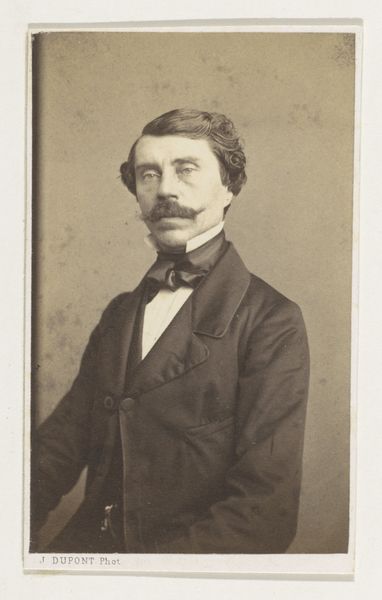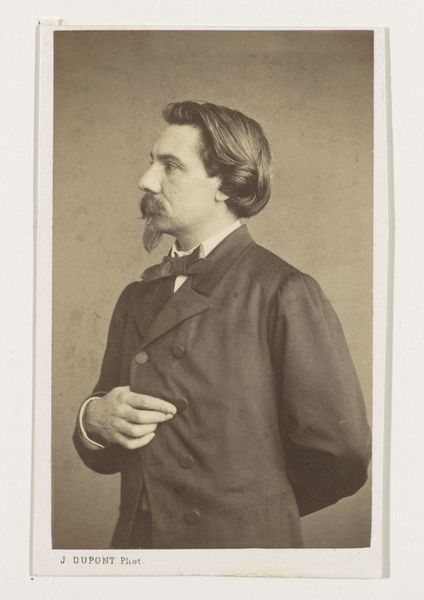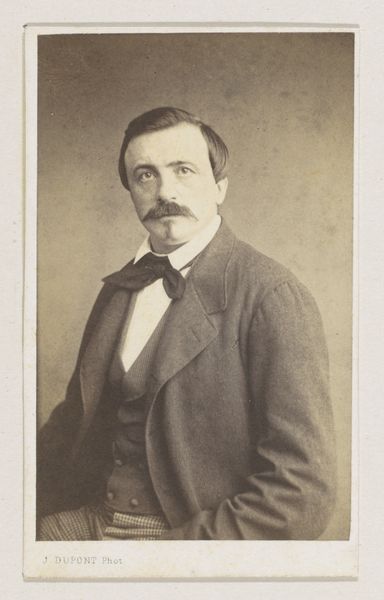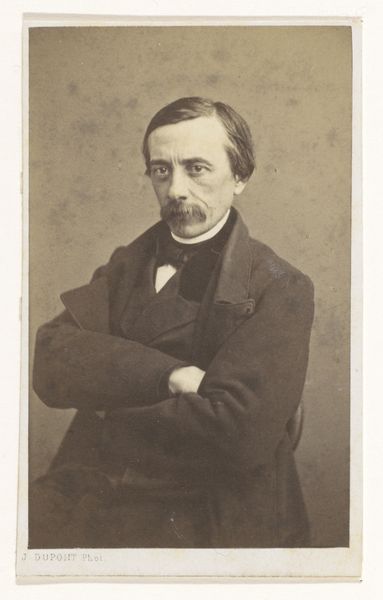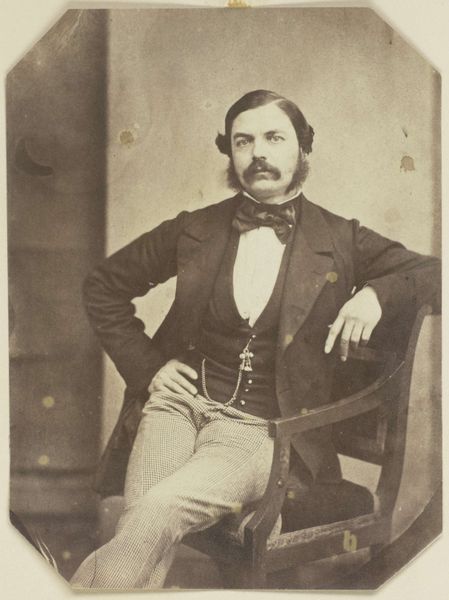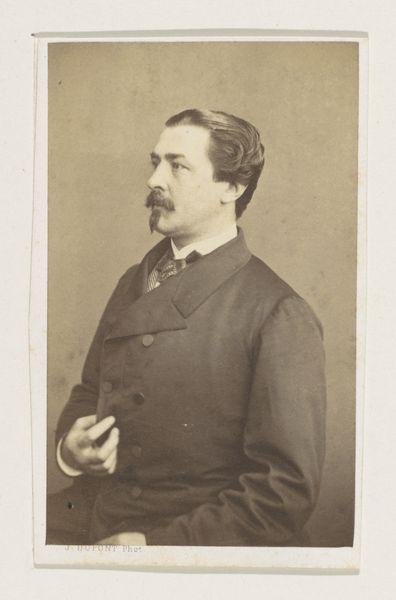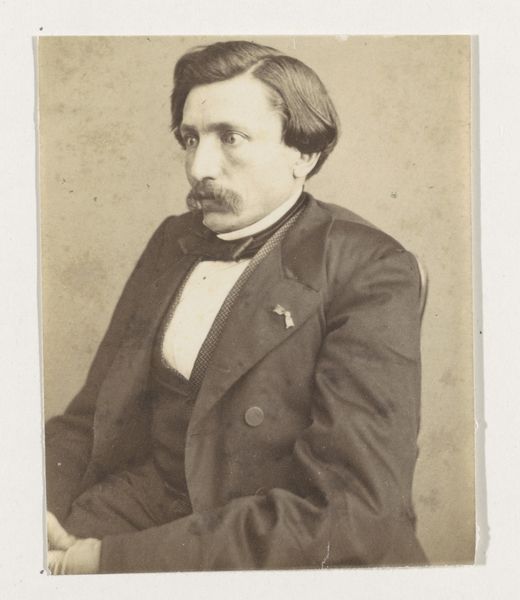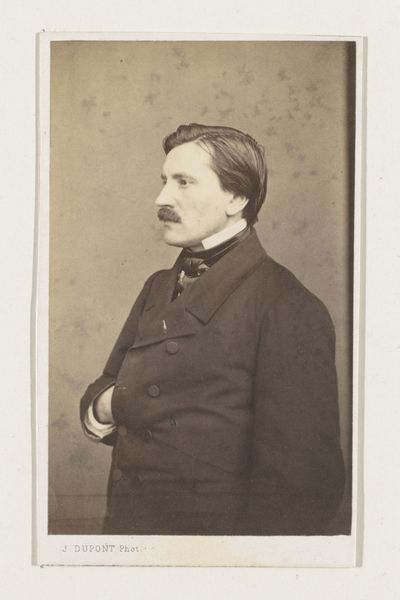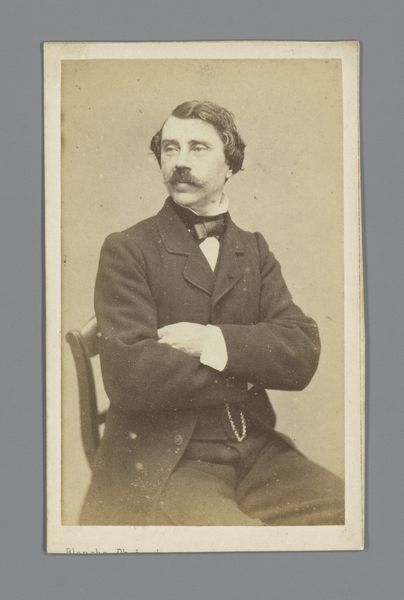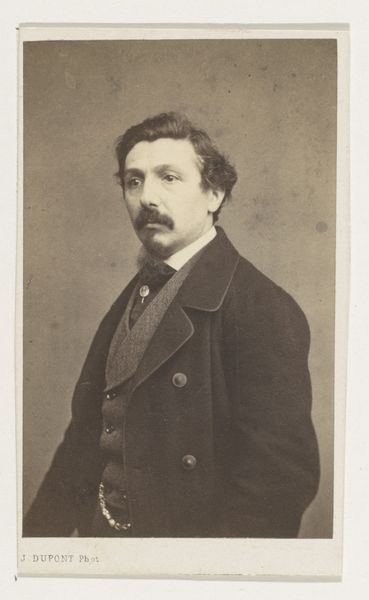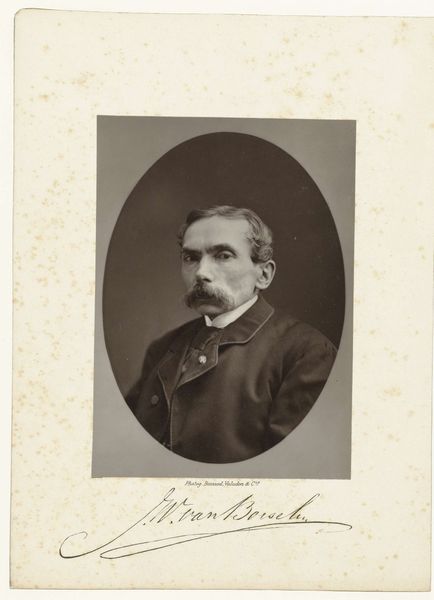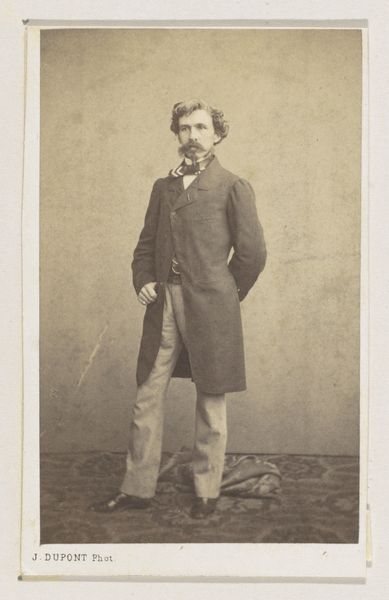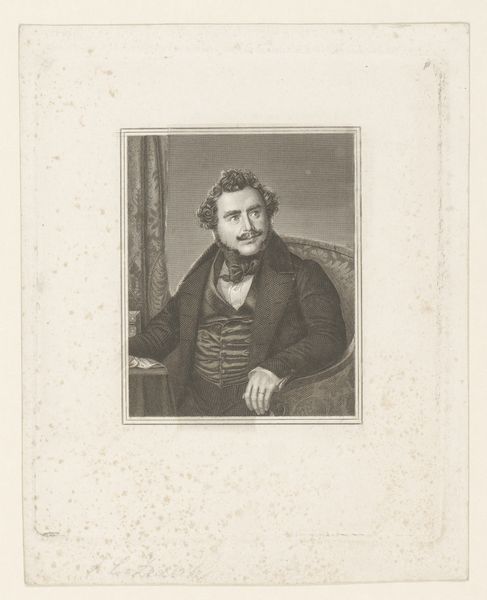
photography, gelatin-silver-print
#
portrait
#
16_19th-century
#
photography
#
gelatin-silver-print
#
realism
Dimensions: height 102 mm, width 62 mm
Copyright: Rijks Museum: Open Domain
Curator: Let's consider this evocative image, "Portret van de schilder Marschouw, halffiguur" created in 1861. The artist behind this piece is Joseph Dupont, using a gelatin-silver print technique. Editor: My first impression is of restrained power, the somber tones and the sitter's direct gaze create an aura of gravitas, yet his posture suggests someone caught in a moment of contemplative vulnerability. Curator: I think you’re on to something important. We have here more than just a painter depicted—it's an intentional staging of identity within the social hierarchies of 19th-century artistry, revealing both artistic and political statements through his posture, clothing and self-presentation. Editor: Agreed. And while acknowledging social context, I am struck by how the photographic medium, particularly the gelatin-silver process popular then, served this artistic construction. It allowed for the replication of detail and a tonal range previously unseen, essentially democratizing portraiture to a certain degree, if only for certain segments of society. Curator: The technical aspects do inform accessibility, yet it is difficult to fully remove issues like race or gender bias of photographic portraits. After all, photographic portraits during the time period served the prevailing patriarchy by granting visibility to individuals conforming to its standards. Editor: That’s where I think a closer examination of the materials complicates matters further. Gelatin, essential for the print, often derives from animal byproducts, inherently intertwining animal exploitation with artistic production, isn't it ironic to construct a portrait of artistic freedom atop an ethical grey area? Curator: This tension is a powerful reminder of how materials are never politically neutral and their stories weave themselves into the artworks they enable. I appreciate your attention to the ethical underpinnings that art relies on. Editor: Likewise. It forces me to rethink historical context. An artwork gains deeper resonance, not just by understanding the person or the era it portrays, but acknowledging the sum total of ethical choices that go into creating it.
Comments
No comments
Be the first to comment and join the conversation on the ultimate creative platform.

